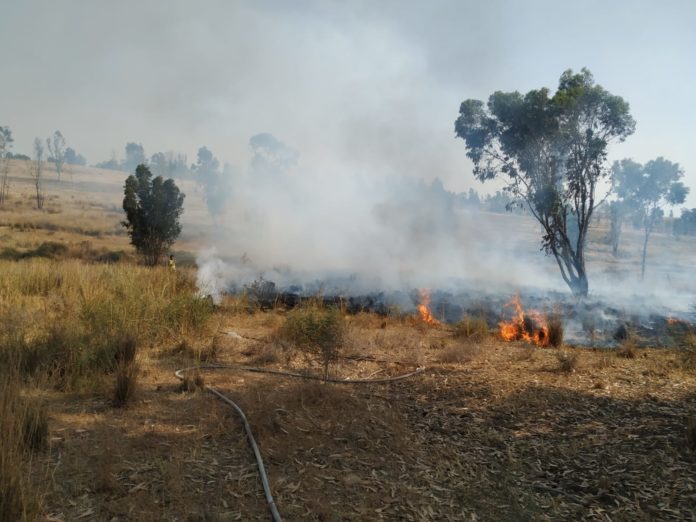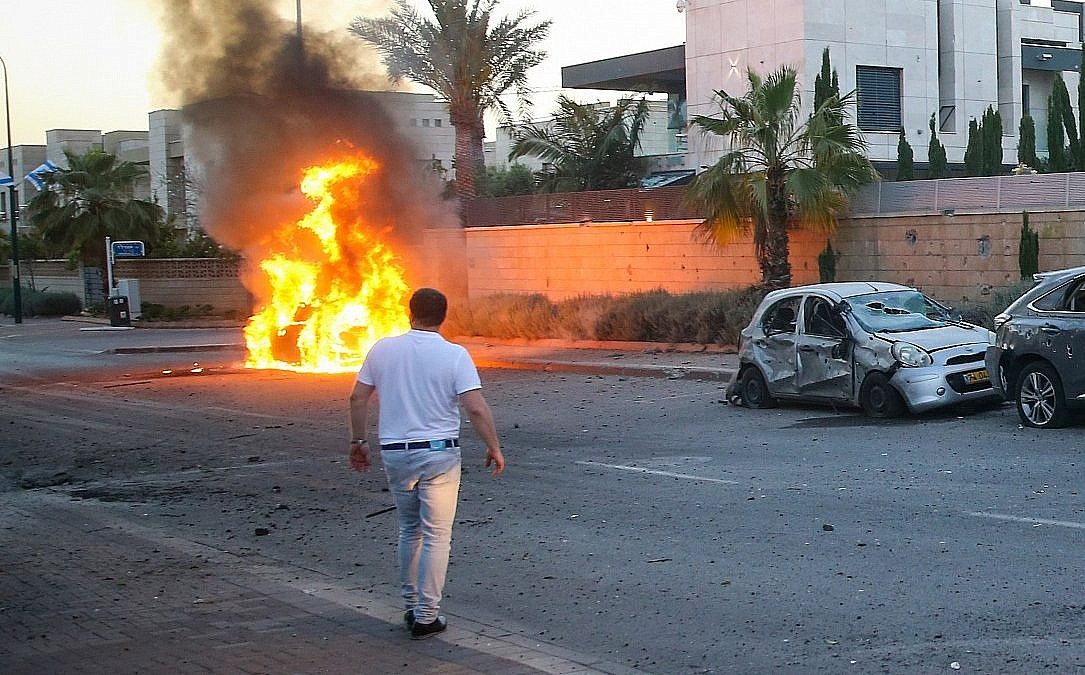

Firefighters work to extinguish blazes in Eshkol and Sdot Negev regions near Gaza border as authorities warn of hot, dry weather feeding fires
By JUDAH ARI GROSS 22 May 2019, 6:39 pm
At least 11 fires were sparked Wednesday in southern Israel by balloon-borne incendiary devices sent over the security fence from the southern Gaza Strip, according to Israeli officials.
Firefighters were called to the scenes of the blazes in the Eshkol and Sdot Negev regions, just outside the coastal enclave.
“All of the fires were caused by incendiary balloons,” a spokesman for the local fire department said.
The fires started in grasslands and agricutural fields. In one case, 50 dunams (12 acres) of wheat fields in Kibbutz Alumim were burned, a Sdot Negev spokesperson said.
The incendiary attacks would appear to violate the reported terms of an unofficial ceasefire agreement between Israel and the Gaza-ruling Hamas terror group. There was no immediate military response by Israel to the fires.
They were some of the worst arson attacks in recent months.
Teams from the fire department, the Parks Authority and the Jewish National Fund, as well as security officers from nearby communities were working to extinguish the fires.
“All of them are under control,” the fire department spokesman said.
Israel’s Fire and Rescue Services issued a firing warning for Wednesday throughout the country, as hot and dry weather struck the country.
The last days have seen an uptick in the amount of balloon-borne incendiary devices launched into Israel, despite the reported ceasefire agreement.
On Tuesday, Israel extended the permitted fishing zone around the Gaza Strip to 15 nautical miles (27.8 kilometers), apparently as a first step of the truce.
Israel refuses to officially acknowledge the existence of a ceasefire agreement, but has largely abided by the reported terms of it.
According to Israel’s Channel 12 news, the agreement includes a Hamas obligation to halt violent incidents along the border fence, maintaining a buffer zone 300 meters from the border; an end to the launching of incendiary balloons at Israeli communities and nighttime clashes between Gazans and security forces; and a stop to flotillas trying to break through the maritime border between Gaza and Israel.
In return, Israel expanded the fishing zone and agreed to enable United Nations cash-for-work programs, allow medicine and other civil aid to enter the Strip, and open negotiations on matters relating to electricity, crossings, healthcare and funds.
Recent weeks have seen tensions in the Gaza Strip soar, following a massive two-day flareup earlier this month between Israel and terror groups in the coastal enclave.


Since March 30, 2018, Palestinians in Gaza have participated in regular protests along the border, demanding Israel lift its restrictions on the movement of people and goods into and out of the coastal enclave and calling for the return of Palestinian refugees and their descendants to lands that are now a part of the Jewish state.
The protests have included many acts of violence against Israeli security forces, and have seen at least 200 Palestinians killed.
Israeli officials maintain that the restrictions on movement are in place to prevent Hamas and other terrorist groups from smuggling weapons into the Strip. They also say the return of Palestinian refugees and their descendants would destroy Israel’s Jewish character.
Times of Israel staff contributed to this report.





